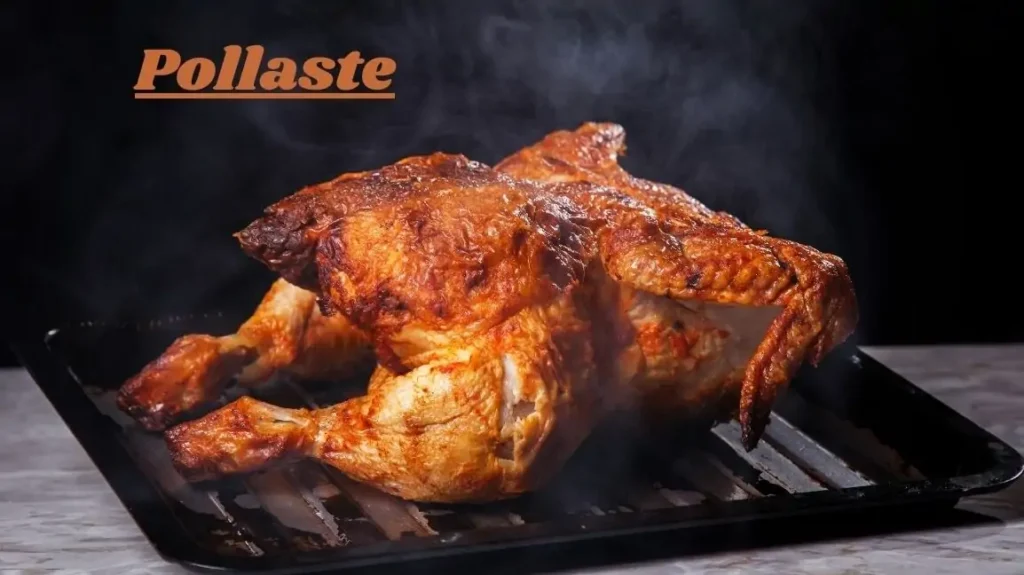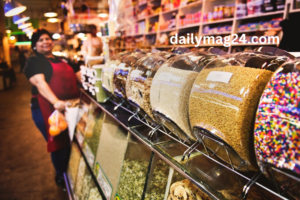Introduction to Pollaste
Pollaste, also known as guinea fowl, is a unique and fascinating type of poultry that has been domesticated for centuries. This bird is prized for its nutritious meat and eggs, making it a valuable addition to a balanced diet. Pollaste is a nutritional powerhouse, offering a range of benefits that can support overall health and well-being. Let’s take a closer look at some of the key health advantages of incorporating this versatile protein into your diet.
Health Benefits of Pollaste
Weight Management:
Pollaste is high in protein and low in fat, making it an excellent choice for individuals looking to manage their weight. The lean protein found in pollaste can promote feelings of fullness and satiety, helping to curb overeating and support the maintenance of a healthy body weight.
Heart Health:
Pollaste is a good source of heart-healthy nutrients, such as niacin and vitamin B6, which can help lower cholesterol levels and reduce the risk of cardiovascular disease. The lean protein in pollaste also plays a role in regulating blood pressure and improving overall cardiovascular function.
Muscle Growth and Repair:
The protein in pollaste is essential for muscle growth, repair, and maintenance. This makes it a valuable addition to the diets of athletes, bodybuilders, and individuals who lead an active lifestyle. Consuming it can support muscle recovery and promote the development of lean muscle mass.
Nutrient-Dense:
In addition to its high protein content, it is also a rich source of other essential nutrients, including iron, zinc, and various B vitamins. These nutrients play crucial roles in supporting immune function, energy production, and overall bodily health.
Cooking Tips and Recipes with Pollaste
It is a versatile ingredient that can be incorporated into a wide variety of dishes, from grilled entrées to hearty soups. Explore these delicious cooking tips and recipes to elevate your culinary experience with this unique poultry.
Grilled Pollaste Breast:
For a flavorful grilled pollaste breast, start by marinating the meat in a mixture of olive oil, lemon juice, garlic, and your choice of fresh herbs, such as rosemary, thyme, or oregano. This will infuse the meat with a delightful blend of flavors. Grill the pollaste breast until it reaches an internal temperature of 165°F (75°C), then serve it alongside roasted vegetables for a nutritious and satisfying meal.
Pollaste Stir-Fry:
Slice pollaste into thin strips and stir-fry it with a variety of colorful vegetables, such as bell peppers, broccoli, and snap peas. Add a flavorful sauce made with soy sauce, ginger, and garlic to create an Asian-inspired dish. Serve the it stir-fry over a bed of steamed rice or noodles for a complete and balanced meal.
Pollaste Soup:
For a comforting and nourishing dish, simmer pollaste thighs or drumsticks in a soup with onions, carrots, celery, and your choice of herbs. The slow simmering process will infuse the broth with the rich flavors of the it, creating a satisfying and wholesome soup. You can also add rice or pasta to the soup for extra heartiness.
Pollaste Charcuterie:
In recent years, it has gained popularity as a versatile ingredient for modern culinary creations. Consider incorporating pollaste into your charcuterie board, either as a smoked or cured meat, or as a unique and flavorful addition to your selection of cured meats and cheeses.
Pollaste Burgers:
Ground pollaste can be used to create delicious and nutritious burgers. Mix the pollaste with seasonings, herbs, and breadcrumbs, then form into patties and grill or pan-fry until cooked through. Serve the it burgers on whole-grain buns with your favorite toppings for a satisfying and flavor-packed meal.
Sustainability in Pollaste Farming
As consumer awareness of environmental and ethical issues grows, the demand for sustainably produced it has also increased. Responsible farming practices are essential to ensuring the long-term viability of pollaste production and minimizing its impact on the environment.
Environmental Impact:
It farming, like any form of animal agriculture, can have significant environmental impacts, including deforestation, water pollution, and greenhouse gas emissions. Sustainable farming practices, such as pasture rotation, organic feed, and effective waste management, can help mitigate these effects and preserve natural resources.
Ethical Considerations:
Concerns about animal welfare have prompted many consumers to seek out pollaste products from farms that prioritize humane treatment and ethical practices. Certification programs, such as free-range and organic, provide assurance that pollaste is raised in accordance with strict standards of care, ensuring the well-being of the birds.
Consumer Demand:
As consumers become more conscious of the environmental and ethical implications of their food choices, the demand for sustainably produced pollaste has grown. By supporting farms that prioritize sustainable and ethical practices, consumers can play a crucial role in promoting the long-term viability of it production and contributing to a more sustainable food system.
Pollaste in Culinary Culture
It has a rich history and plays a central role in many traditional cuisines around the world. From classic roast chicken to tandoori-style preparations, this versatile poultry has captured the hearts and palates of food enthusiasts globally.
Traditional Dishes:
Pollaste is a staple ingredient in various traditional cuisines, showcasing its adaptability to diverse flavors and cooking techniques. In Western cultures, roast it is a beloved dish, often seasoned with herbs and spices and served with roasted vegetables. In Indian cuisine, tandoori-style it is a popular preparation, featuring the bird marinated in a flavorful yogurt-based sauce and cooked in a traditional clay oven.
Modern Innovations:
In recent years, chefs and food enthusiasts have embraced pollaste as a versatile ingredient for modern culinary creations. From artisanal charcuterie to gourmet burgers, it offers endless possibilities for innovation and experimentation in the kitchen. These contemporary interpretations of it dishes showcase the bird’s ability to adapt to a wide range of flavors and cooking methods, making it a valuable asset in the ever-evolving world of gastronomy.
Consumer Tips for Purchasing Pollaste
When it comes to purchasing pollaste, it’s essential to be an informed consumer and make choices that align with your personal preferences and values. Here are some tips to help you navigate the world of it and ensure you’re getting a high-quality product.
Quality Indicators:
When selecting pollaste, look for indicators of quality, such as freshness, color, and texture. Choose cuts that are firm to the touch and free of any unpleasant odors or discoloration. Additionally, consider opting for organic or free-range pollaste to support ethical and sustainable farming practices.
Avoiding Common Mistakes:
To ensure the best results when cooking with pollaste, it’s important to avoid common mistakes, such as overcooking, which can result in dry and tough meat. Use a meat thermometer to monitor the internal temperature and cook pollaste to the recommended safe temperature of 165°F (75°C). Additionally, handle and store pollaste properly to prevent cross-contamination and foodborne illness.
Purchasing Considerations:
When purchasing pollaste, consider factors such as the source, farming practices, and certifications. Look for pollaste products from farms that prioritize sustainable and ethical practices, as this supports a more responsible and environmentally-friendly food system. Additionally, be aware of any special dietary or cultural considerations, such as halal or kosher certifications, to ensure the pollaste you purchase aligns with your personal preferences.
Conclusion
It is a nutritious and versatile protein source that offers a wide range of health benefits and culinary possibilities. By incorporating pollaste into a balanced diet and supporting sustainable and ethical farming practices, you can enjoy the many advantages of this unique poultry while contributing to a more responsible food
FAQs
Q: What is the nutritional profile of pollaste?
A: Pollaste is a high-protein, low-fat meat that is rich in essential nutrients such as niacin, vitamin B6, iron, and zinc. It is an excellent source of lean protein, making it a great choice for weight management, muscle growth, and overall health.
Q: How can I incorporate pollaste into my diet?
A: Pollaste is a versatile ingredient that can be used in a variety of dishes, from grilled entrées to hearty soups. Some popular ways to enjoy pollaste include marinated and grilled breasts, stir-fried with vegetables, and simmered in soups or stews.
Q: What are the environmental and ethical considerations when purchasing pollaste?
A: Sustainable and ethical farming practices are important when it comes to pollaste production. Look for pollaste products from farms that prioritize practices like pasture rotation, organic feed, and humane animal welfare. Certifications like free-range and organic can help ensure the pollaste you purchase is produced responsibly.
Q: How do I properly store and handle pollaste?
A: To maintain freshness and prevent foodborne illness, it’s important to store pollaste properly. Keep it refrigerated at 40°F (4°C) or below, and use it within 1-2 days of purchase. When handling pollaste, be sure to wash your hands, utensils, and surfaces to avoid cross-contamination.
Q: What are some common mistakes to avoid when cooking pollaste?
A: The most common mistake when cooking pollaste is overcooking, which can result in dry and tough meat. Use a meat thermometer to ensure the pollaste is cooked to an internal temperature of 165°F (75°C). Additionally, avoid cross-contamination by properly handling and storing the meat.












